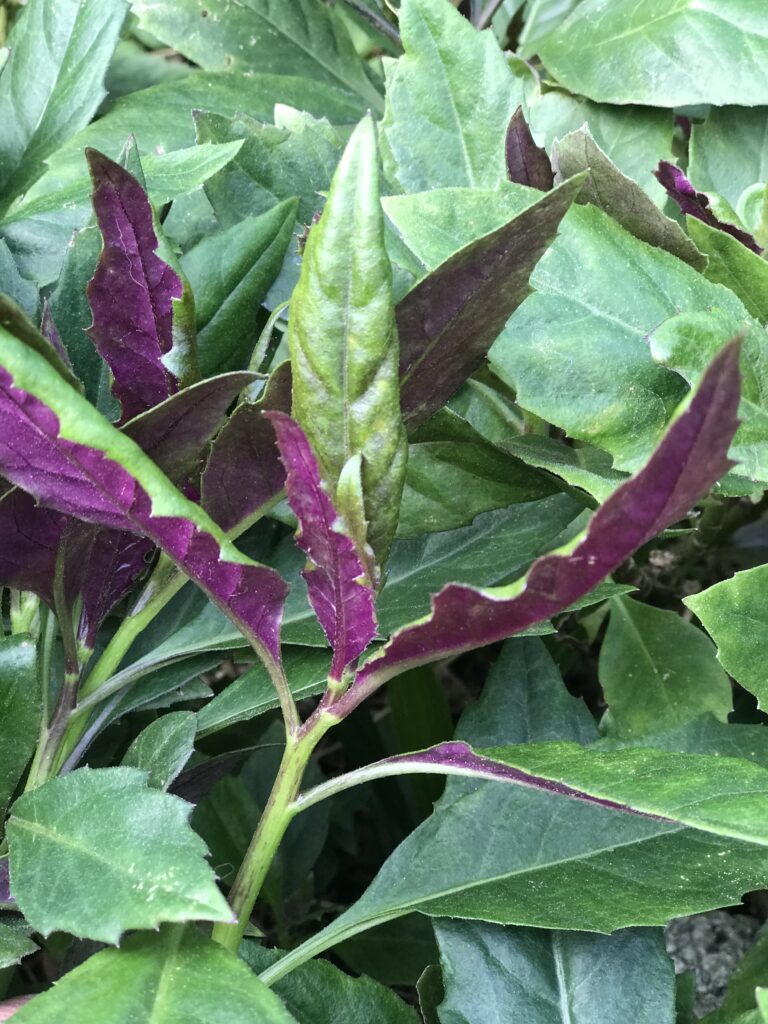Okinawa spinach
Okinawa spinach, also known as Gynura bicolor, is a perennial tropical plant from Southeast Asia. It’s very popular with Permaculture advocates because of its ease of growth, low maintenance, and multipurpose nature. It is both edible and ornamental.
Because it’s a perennial, it makes a fantastic underplanting for fruit trees. Its creeping nature makes it a useful groundcover, but it’s also a fantastic leafy green to add to stir fry, salads, and slaws.
Benefits
- Perennial vegetable that grows back after harvest
- Attractive foliage that also makes it an ornamental
- Low, crawling growth habit makes it excellent groundcover
- Easy to grow and propagate
- Rich in vitamins and minerals
- Excellent in stir fries and slaws
- Nutritious forage for livestock

Okinawa Spinach Description
Okinawa spinach is a low-growing leafy vegetable. The bicolor variety features shiny, dark-green leaf tops and dark purple leaf undersides. Leaves are reminiscent of spearheads, and when it flowers, it produces small, vivid orange blooms.
Use Okinawa spinach as part of a stir fry or cook like spinach. It can also be eaten raw and combines well with cabbage as an ingredient in slaws.
Okinawa Spinach Care Tips
Okinawa spinach, or Gynura bicolor, grows well in tropical and subtropical regions. Plant in partial shade in rich soil with plenty of organic matter.
Water regularly during spring and summer, but you can reduce watering when it grows more slowly, below 60°F.
Use a diluted balanced fertilizer every two weeks during the growing season and once a month during cooler months.
Harvest leaves and cut back regularly to encourage growth and branching.
Hardy in zones 9-12, but can be overwintered indoors or grown as an annual in cooler zones.
| Species Name: | Gynura bicolor |
| Common name(s): | Okinawa spinach, Hong tsoi |
| Defining Characteristics: | Tops of leaves are dark, shiny green, and undersides are dark purple. |
| Temperature requirement: | 60-85°F (Can handle lows in the high 40s for a short time, and higher highs with enough shade) |
| Watering frequency: | Water regularly and hot/dry weather |
| Lighting: | Partial or dappled shade |
| Soil type: | Rich, well draining, sandy soil |
| Height: | 10-12 inches tall |
| Origin: | Southeast Asia |
| USDA Hardiness Zone: | 9-12 |
| Additional Notes: | Harvest regularly to produce bushier growth. |